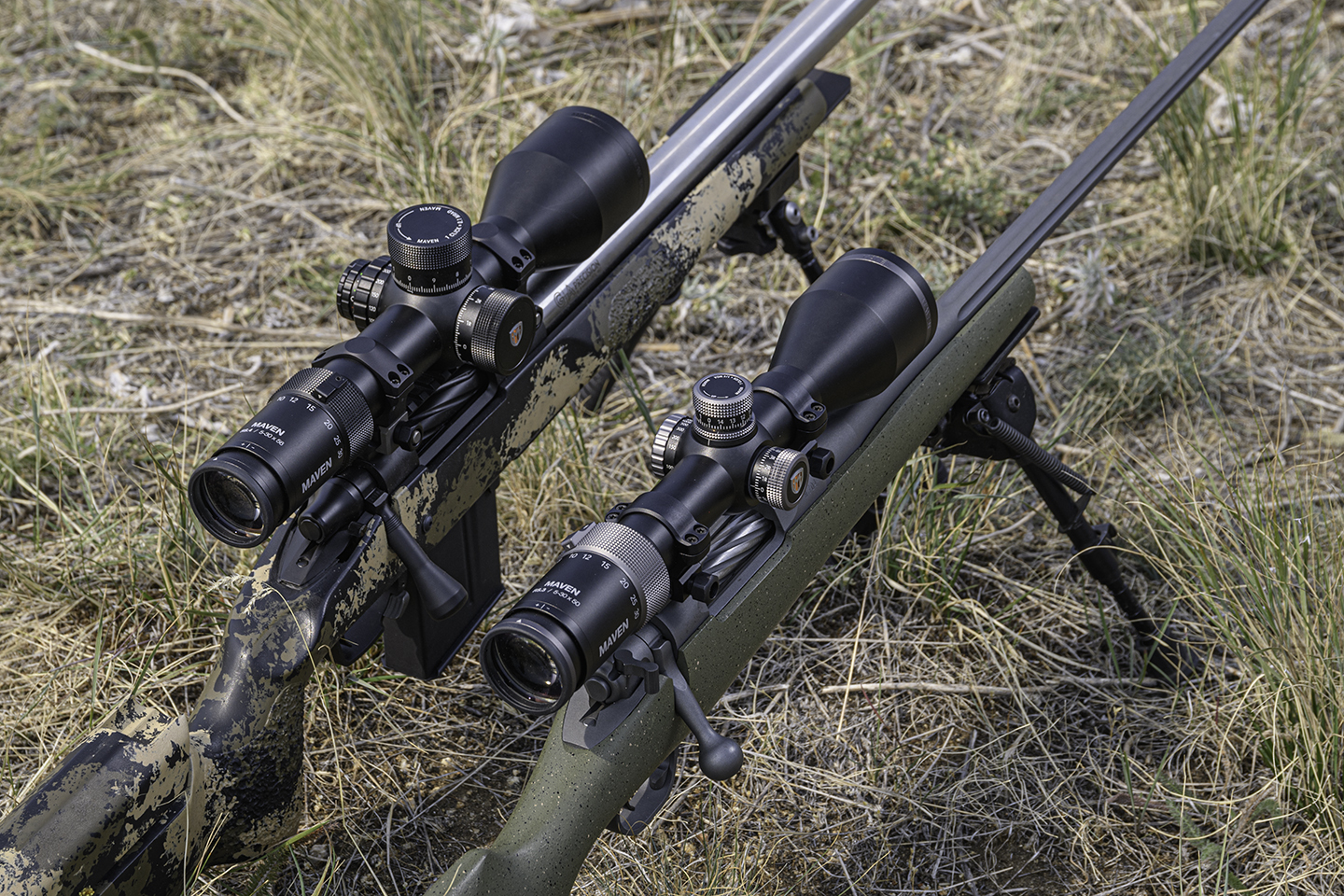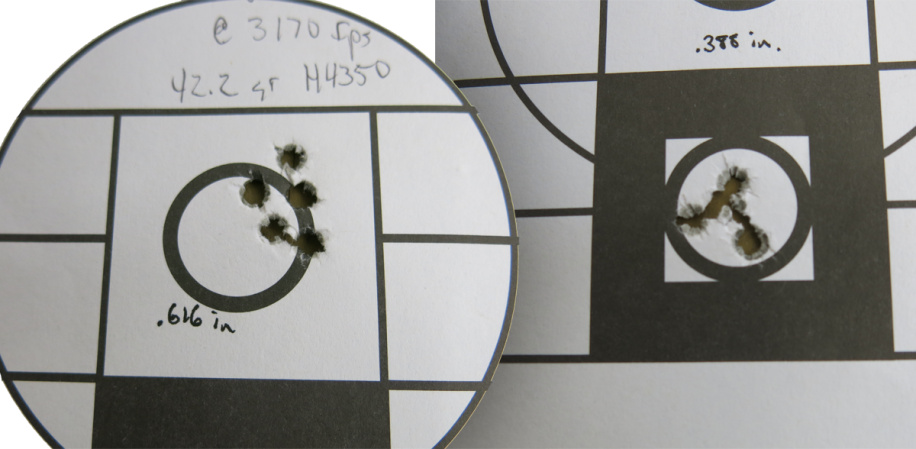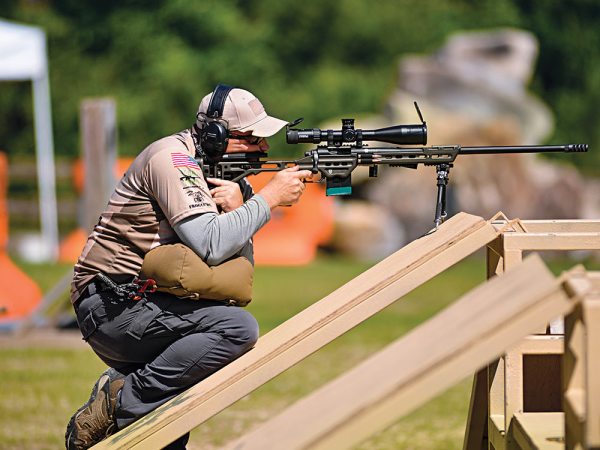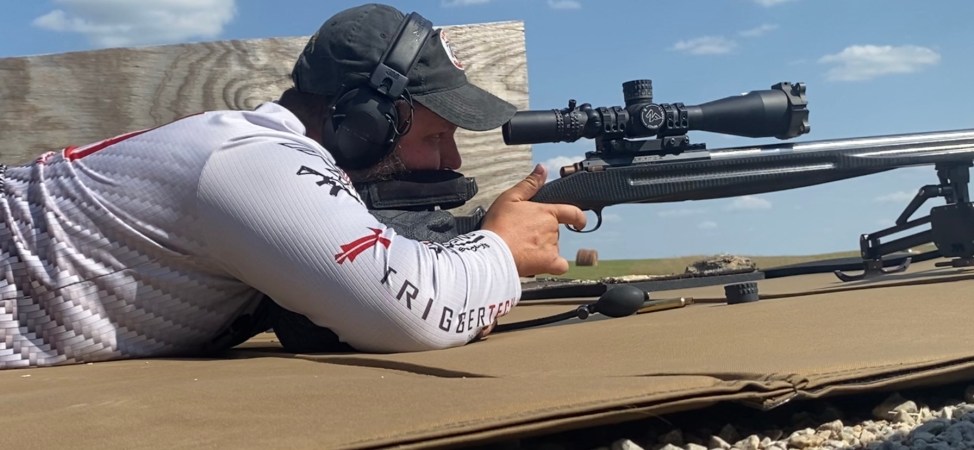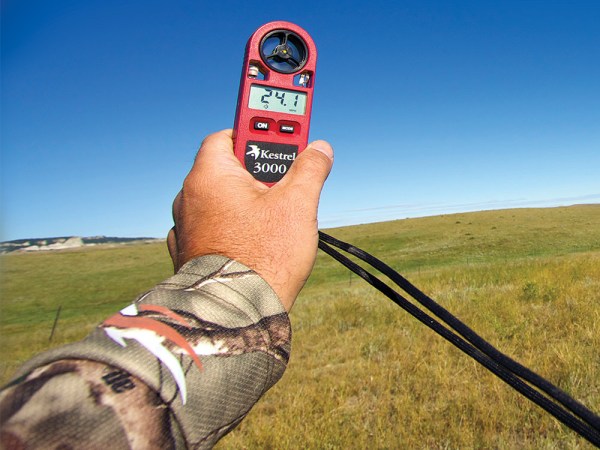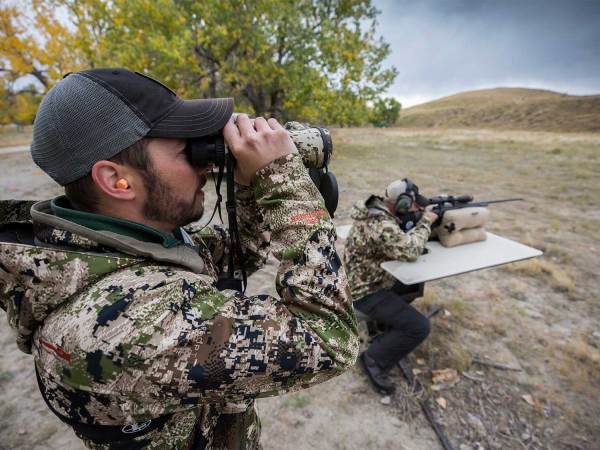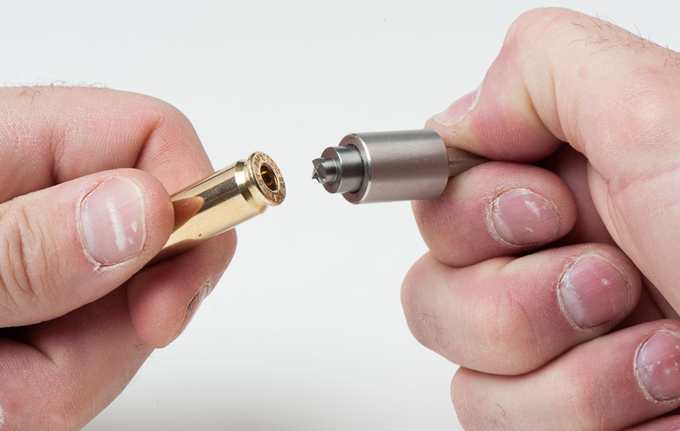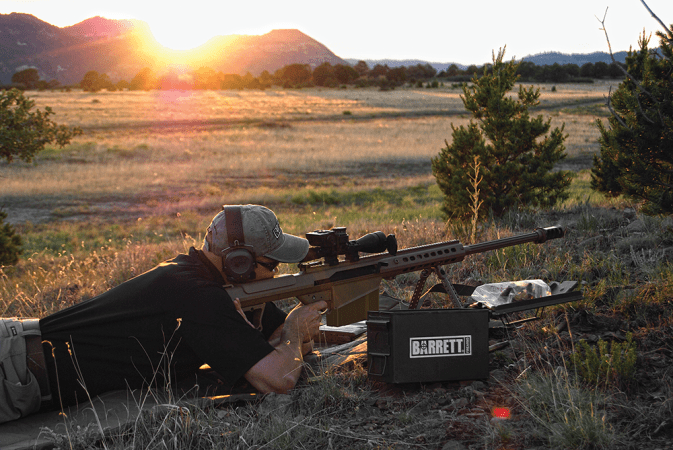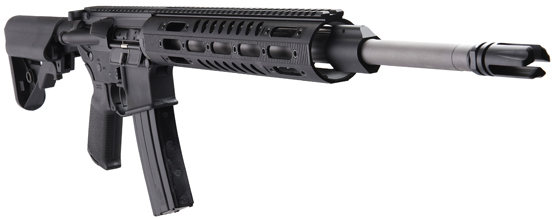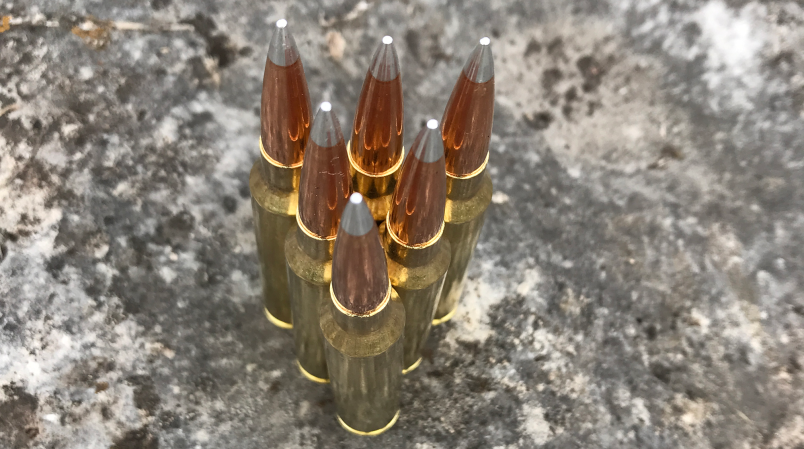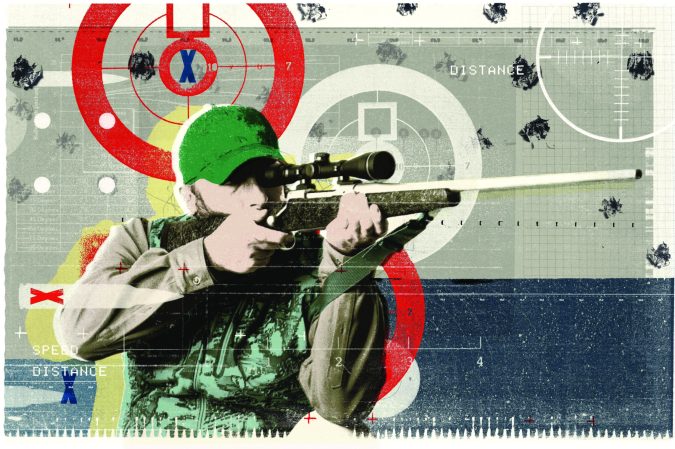We may earn revenue from the products available on this page and participate in affiliate programs. Learn More ›
It’s the big Ford vs. Chevy debate in the world of long-range precision riflescopes: Do you go with a reticle based on minutes of angle (MOA) or milliradians (mils)? I’ll lay out some of the pros and cons as I see them, but more importantly we’ll talk about how to leverage these systems to become a better long-range shooter.
Ballistic Ice Cream Cone: MOA and Mil Reticles
Both MOA and mils are angular units of measure. Picture either as an ice cream cone or a slice of pizza with the tip as your location. As the distance from that point increases, the value of an MOA or mil grows as well, like the two sides of the cone. So at 100 yards, 1 MOA equals about 1 inch. At 200 yards, 1 MOA is about 2 inches, and so on.
A milliradian grows in the same fashion though its value is different. One mil equals 3.6 inches at 100 yards. While that might seem more complicated than the MOA system, you’ll see that it is actually simpler to use in practice.
Pros and Cons of MOA
The biggest advantage to shooting with an MOA-based precision riflescope is familiarity. Most American shooters started with MOA scopes and have developed a feel for thinking in MOAs. This is especially the case among hunters, with whom MOA scopes dominate. The logic of one MOA equating to 1 inch at 100 yards makes sense, and extrapolating from there to come up with values at longer distances is almost second nature among these sportsmen.
Another advantage in some peoples’ eyes is that MOA scopes, which typically adjust in .25-MOA increments, are more precise than mil scopes, which mostly adjust in .1 mil clicks. The idea being that a .25-inch shift in the reticle can be tuned more finely than the .36-inch shift that a .1 mil click provides.
This is more of a theoretical than practical advantage, however. To put it in perspective, at 1,000 yards we’re talking about a 2.5-inch shift for an MOA click versus a 3.6-inch shift for a mil click. The 1.1-inch difference between the two is so small that no shooter could even hold that variance on a target 1,000 yards downrange.
The cons of MOA reticles are twofold. One is the difference between Shooter’s MOA (SMOA), which is calculated at exactly 1 inch at 100 yards, and True MOA (TMOA), which is 1.047 inches at 100 yards. That might not seem significant, but it is. If you have a scope calibrated in SMOA and use a TMOA ballistic solver, you can experience as much as a foot and a half of error in point of impact at 1,000 yards.
The other con is the need to extrapolate in fractions. I don’t know about you, but the less math I need to do when shooting, the happier I am.
Pros and Cons of Mils
The best way to think about mils is that 1 mil is 1/1000th of whatever you’re looking at. So, at 1,000 yards, a mil is a yard. At 1,000 feet, a mil equals a foot. If the target is 1,000 hotdogs down range and it is a mil tall—it is a hotdog tall. It is a base 10 system that’s very easy to work with.
Let’s take that to the next level. If a target is 1,583 yards away, a mil equals 1.583 yards. All you have to do is move the decimal over three places to get that 1/1000th value. Each .1 mil click is .158 yard.
Try that with TMOA and you’ll see it is much more complex.
Another advantage of mils is that the marks in the reticles tend to line up better with the turret adjustments than MOA based scopes. Most modern mil reticles have .2 mil hashmarks, which correspond nicely to the .1 mil turret clicks. In MOA reticles, the hashes are often 1 MOA apart and since the clicks are .25 MOA you’re dealing with fractions again.
There is no real con to mils, other than it being unfamiliar to a lot of shooters.
Mastering the Reticle
No matter which system you choose for your shooting task, you’ll need to spend time learning the reticle. Give yourself random elevation and wind calls when doing dry-fire practice, where you dial elevation and hold wind, or hold both values. Throw out numbers that make you use the entire reticle.
To add complexity, increase the number of “targets” in the dry fire practice. Once you feel comfortable with that, start each drill with a series of random yardages and wind values. Use a solver or dope card to get your data and then adjust your turrets and wind hold accordingly. (Remember, we’re dialing elevation and holding wind, or holding both.)
You can do this prone, or off some type of support like the back of a chair or the rung of a stool. This is a good time to work on other marksmanship fundamentals like trigger control, breath control, and solidifying your position. Carefully watch your crosshairs as you dry fire to see that your hold remained steady through the trigger press.
Follow-Up Drill for MOA and Mil Reticles
One useful live-fire drill you can do with a partner is to shoot at dots at 100 yards. Before each shot, the person who isn’t firing dials the windage and elevation on the shooter’s scope a random amount. The person who’s shooting puts the crosshairs on the dot, fires, spots where the shot impacted, runs the bolt, and makes a correction using only the reticle to place a second shot on the dot.
To do this, the shooter simply moves the crosshairs so that the place in the reticle where the shot hit is now on the center dot. This will train you to master the reticle along with fundamentals such as recoil management.
Next, we’ll discuss ballistic solvers, wind meters, and rangefinders, all of which will help us apply these skills on targets in the field.

